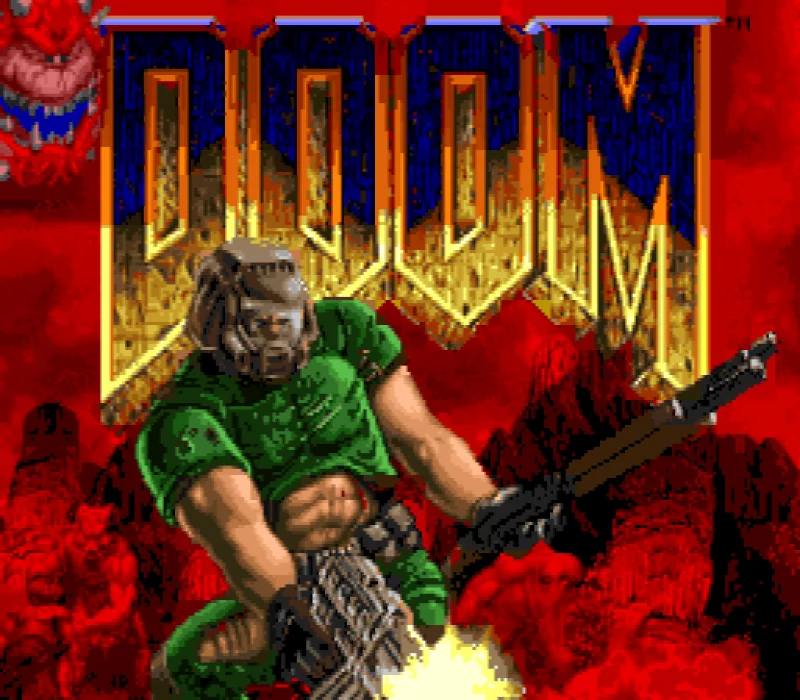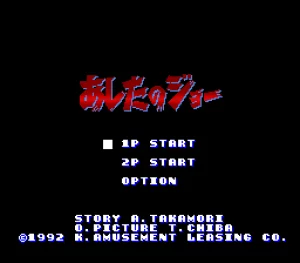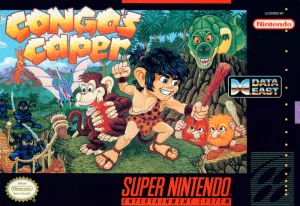Doom

Description
On the moons of Mars known as Phobos and Deimos, the Union Aerospace Corporation has been conducting research and development on teleportation technology. After an initial run of success, things start to go wrong. It would appear that the scientists have opened a portal that leads directly to hell. Phobos's main settlement is overrun by demonic beasts, and the entire moon of Deimos disappears without a trace. Marines are dispatched to Phobos, but with the exception of one, they all perish almost immediately upon arrival. It is up to the lone remaining marine to get a hold of some weapons and fight back against the demons.
DOOM is a first-person, three-dimensional shooter developed by id Software as a follow-up to their groundbreaking game Wolfenstein 3D. The game features nonstop action as seen from the point of view of a space marine. The game, much like Wolfenstein, is broken up into individual chapters that can be tackled in any order. Knee-Deep in the Dead is the first episode in the series and takes place in the Phobos base. You can download this episode for free as shareware. The full version of the game continues on Deimos in The Shores of Hell and reaches its climax in Inferno, the concluding episode, which takes place in Hell itself (the Sega 32x version lacks this episode).
Simply completing a level and making it to the next one is always the primary goal. Because there are a large number of foes in the way, the only way to reach your destination is to eliminate them one by one. At various points, certain switches and buttons must be activated in order to proceed, and color-coded locked doors will frequently stand in the player's path, requiring them to locate matching keycards or skull keys in order to proceed.
Since this game's engine technology is more advanced than that of Wolfenstein, the game's levels are more diverse and complex as a result. The engine creates a simulation of varying heights (there are stairs and lifts present quite frequently), as well as varying lighting conditions (some rooms are pitch black, others only barely illuminated). In contrast to Wolfenstein's corridors, which are always aligned orthogonally, the walls in DOOM can be at any angle to one another. The game also features open-air environments, radioactive waste pools that can cause damage to the player, and ceilings that can fall on him and crush him. The use of an automap makes navigating through the levels easier.
In terms of design, the levels begin with a futuristic motif in the military base on Phobos and gradually transition into a hellish environment, complete with satanic symbols (pentagrams, upside-down-crosses, and portraits of horned demons), hung-up mutilated corpses, and the distorted faces of the damned.
There is a large arsenal of weapons available to use in DOOM, and the majority of those weapons have both benefits and drawbacks. The player begins the match with only their fists and a basic pistol. In addition, you have access to a shotgun, which deals high damage but has a slow reload and is not very effective at longer ranges; a chaingun, which has a high firing rate but tends to be inaccurate during longer bursts; and a plasma rifle (combining a high firing rate and large damage). The rocket launcher inflicts a significant amount of damage on its targets as well, but the explosion it causes also inflicts damage on the surrounding area. Because of this, the player must exercise caution when using the weapon in enclosed spaces or it could endanger them as well as their foes. The chainsaw, which is useful for causing carnage in close quarters, and the BFG9000 energy gun, which, despite the fact that it requires some practise to fire accurately, can eliminate the majority of foes with a single burst of fire, are two additional weapons that are included in the game. There are four distinct types of ammunition that can be used by the various firearms. These include bullets, shells, rockets, and energy cells. It is essential to stockpile the appropriate type of ammunition for each gun.
The game removes some of the arcade-inspired elements that were previously present in Wolfenstein; consequently, there are no longer any extra lives or treasures that can be collected for points; however, a large number of other power-ups are still accessible. While armour prevents damage from occurring in the first place, health packs are used to heal existing wounds. A computer map reveals the entire layout of the level on the automap (including any secret areas), light amplification visors illuminate dark areas, and radiation suits allow travel over waste without taking damage. Backpacks allow more ammunition to be carried, and light amplification visors illuminate dark areas. In addition to that, you can purchase berserk packs, which significantly boost the damage done by the fists, as well as power-ups that make you invisible and invulnerable for a limited amount of time.
Demons come in all shapes and sizes, including fireball-throwing imps, floating skulls, pink-skinned demons with powerful bite attacks, and large flying monstrosities known as Cacodemons. These enemies, which must be eliminated, include former humans who were corrupted during the invasion. The final fight of each episode takes place against a particularly powerful creature or creatures known as the boss.
DOOM is credited with popularising multiplayer in the first-person shooter genre by offering two distinct game modes: Cooperative and Deathmatch. Cooperative allows players to move through the single-player game together, while Deathmatch is a competitive game type in which players blast at each other to collect 'frag' points for a kill and re-spawn in a random location after being killed.
Although the 3DO and Sega32x ports do not include any multiplayer modes, the other ports keep the DOS version's multiplayer in some form or another. The numerous console ports all have levels that are simplified, and they leave out some of the levels, enemies, and features that were available in the DOS version. Both the Super Nintendo Entertainment System and Game Boy Advance versions of the game use different game engines, which results in numerous minor gameplay differences between the two systems.















